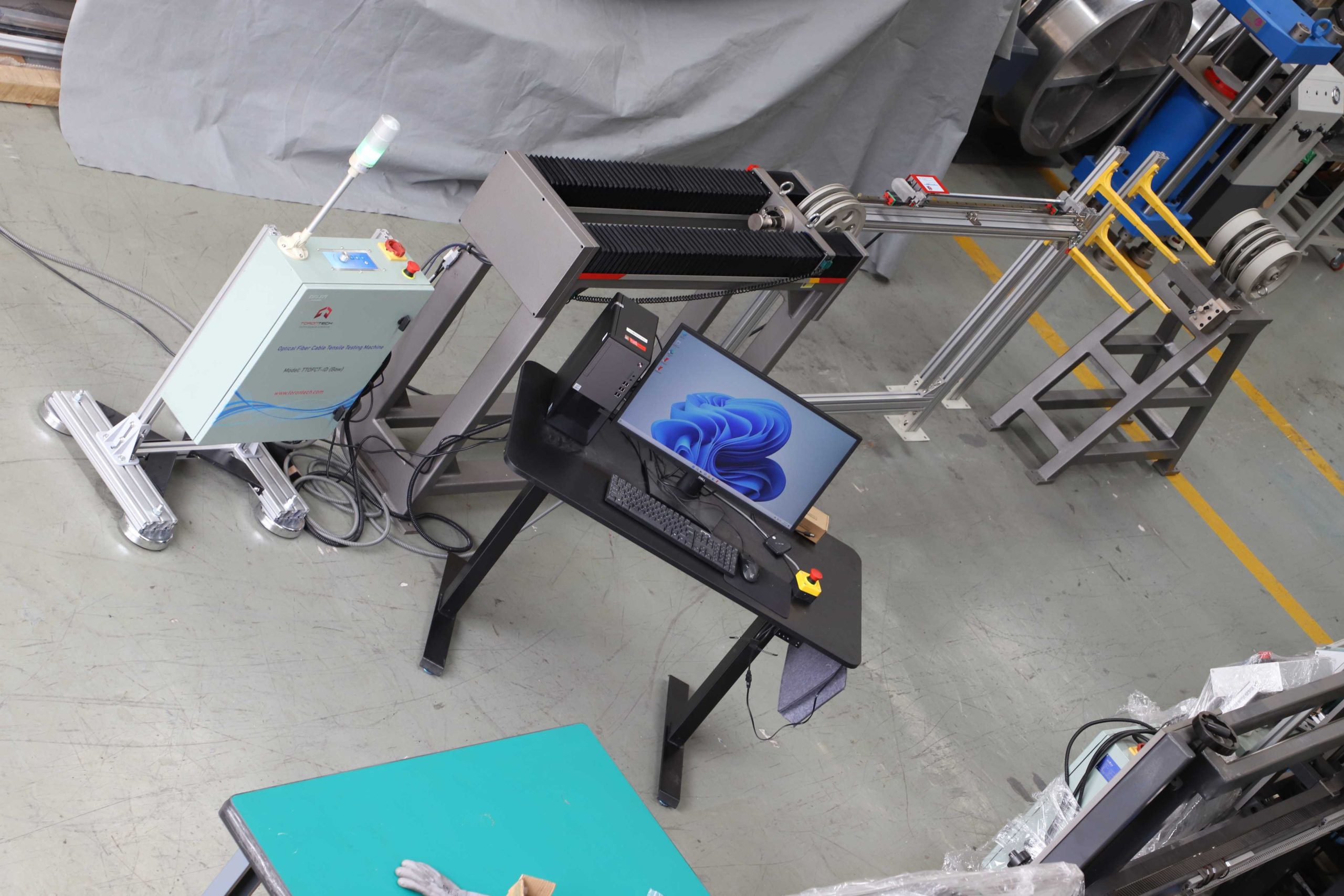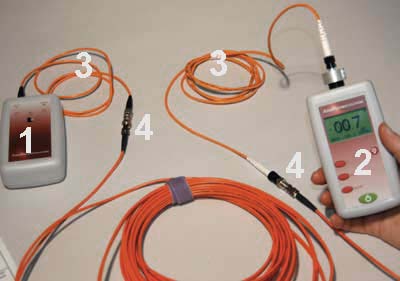Common questions about robotic vision in manufacturing
Wiki Article
Understanding Exactly How an Optical Measurement System Enhances Accuracy in Industrial Applications
Optical measurement systems play a vital role in improving accuracy across numerous industrial applications. By leveraging innovative technologies such as laser interferometry and 3D imaging sensing units, these systems offer high-resolution, non-contact dimensions. This capability lessens the risk of damaging delicate components while making sure precision. Nevertheless, the influence of these systems extends past plain measurements. Discovering their benefits, applications, and future patterns exposes a complex landscape of development and obstacles that benefits better exam.The Basics of Optical Measurement Systems
Optical measurement systems function as crucial tools in different commercial applications, giving precise data collection and analysis. These systems use light as a key means of measurement, leveraging optical principles to evaluate measurements, placements, and surface area characteristics of objects. They integrate elements such as lasers, electronic cameras, and sensing units, which interact to capture high-resolution images and data.The innovation allows non-contact dimensions, decreasing the threat of damaging delicate parts. Optical measurement systems are versatile, finding utility in quality control, assembly confirmation, and dimensional evaluation throughout various fields. They are specifically reliable in settings where typical measurement strategies might drop short, such as gauging complicated geometries or observing fast motions.
As markets remain to develop, the integration of optical measurement systems will continue to be crucial for ensuring precision and performance, eventually improving product quality and functional efficiency in different manufacturing processes.
Trick Technologies Behind Optical Measurement
Trick innovations such as laser interferometry techniques and 3D imaging sensors play an essential function in the efficiency of optical measurement systems (optical fibre diameter analyser). These innovations enable precise dimensions and detailed evaluation in different commercial applications. Recognizing their performances is essential for using the complete potential of optical measurement systemsLaser Interferometry Techniques
Countless laser interferometry methods have actually reinvented the field of optical measurement, supplying unmatched precision and precision in numerous industrial applications. These strategies use the disturbance of meaningful light waves to measure distance, variation, and surface abnormalities with nanometer-level precision. Usual methods consist of Michelson interferometry, which splits a beam and analyzes stage changes, and Fabry-Pérot interferometry, understood for its high resolution in gauging small adjustments. Additionally, laser Doppler interferometry utilizes regularity shifts to examine velocity, making it important in dynamic dimensions. The flexibility of these techniques permits for their integration into varied production processes, improving quality assurance and ensuring adherence to rigid resistances. Therefore, laser interferometry continues to play an essential role ahead of time industrial measurement criteria.3D Imaging Sensors
Advancements in measurement technology have caused the growth of 3D imaging sensors, which play a significant function in optical measurement systems. These sensors catch three-dimensional information via numerous techniques such as triangulation, time-of-flight, and structured light. By precisely reconstructing the shape and measurements of items, 3D imaging sensing units boost the accuracy of dimensions in commercial applications. They provide real-time feedback, facilitating quality assurance and guaranteeing that elements satisfy rigid specs. Furthermore, their capability to run in difficult atmospheres, such as varying illumination conditions, makes them indispensable in producing processes. As markets increasingly adopt automation, the integration of 3D imaging sensors right into optical measurement systems is anticipated to drive more renovations in effectiveness and accuracy.Advantages of Optical Measurement in Industry
Typical measurement approaches have actually long been the standard in commercial setups, optical measurement systems provide significant benefits that improve precision and performance. These systems use light to catch data, causing high-resolution dimensions that are typically unattainable with conventional strategies. The non-contact nature of optical dimensions reduces the threat of damaging sensitive components throughout the evaluation procedure. Furthermore, the speed of optical dimensions enables quick data acquisition, promoting timely decision-making in busy industrial settings.Optical systems are adaptable, efficient in determining numerous materials and forms without the requirement for considerable recalibration. This adaptability contributes to enhanced workflow and performance. The automation capacity of optical measurement systems decreases human error, making certain regular top quality control. Overall, the combination of optical measurement modern technology represents a modern change towards improved precision and reliability in industrial procedures, inevitably causing boosted item quality and operational performance.
Applications of Optical Measurement Systems

Optical measurement systems play a pivotal function in improving production procedure optimization by providing accurate information for decision-making. These systems assure quality control assurance through real-time tracking and evaluation of manufacturing metrics. As sectors significantly adopt these innovations, their effect on performance and item integrity becomes noticeable.
Manufacturing Process Optimization
Enhancing manufacturing process efficiency is progressively reliant on the combination of optical measurement systems. These systems supply real-time information on numerous criteria, permitting suppliers to assess procedures with a high level of precision. By enabling specific dimensions of measurements, surface area features, and product homes, optical measurement systems assist in the recognition of ineffectiveness and bottlenecks in assembly line. The prompt responses from these systems encourages designers to make educated decisions, leading to optimized machining, assembly, and ending up procedures. Additionally, the capability to keep track of conditions continuously permits flexible modifications, lessening downtime and waste. As industries purpose for greater performance and reduced functional costs, optical measurement systems arise as essential tools for boosting manufacturing process optimization.
Quality Control Guarantee
The assimilation of optical measurement systems significantly effects top quality control assurance in industrial settings. These systems give precise and non-destructive measurements, allowing suppliers to detect problems and inconsistencies early in the manufacturing process. By utilizing sophisticated imaging methods, such as laser triangulation and interferometry, optical measurement systems assure that parts meet stringent specifications. This assists in real-time surveillance, reducing waste and minimizing the risk of defective products reaching the market. Furthermore, the data gathered can be examined to refine production processes even more, resulting in constant enhancement. Eventually, the adoption of optical measurement systems enhances reliability and consistency in quality control, cultivating better self-confidence amongst stakeholders and clients alike in the end products delivered.Case Researches: Effective Applications
Many markets have successfully incorporated optical measurement systems to boost their functional effectiveness and product quality. As an example, in the auto market, a famous producer adopted a laser triangulation system to monitor the placement of automobile elements. This application greatly lowered setting up errors, leading to boosted safety and reduced expenses.In the aerospace industry, a leading airplane producer made use of optical assessment for accuracy measurements of generator blades, accomplishing a reduction in producing resistances and better performance standards.
In a similar way, a consumer electronic devices company applied optical measurement innovation throughout the production of smart device screens, leading to enhanced high quality control and a decline in defective products.
These study highlight how optical measurement systems not only boost precision but likewise add to total operational effectiveness, demonstrating their worth across various fields. By resolving particular demands, these systems have actually confirmed to be essential tools in contemporary commercial applications.
Obstacles and Limitations of Optical Measurement
While optical measurement systems offer significant advantages in different commercial applications, they are not without their obstacles and constraints. One significant concern is sensitivity to environmental conditions, such as temperature changes, humidity, and dust, which can negatively impact measurement precision. Furthermore, optical systems usually call for precise placement and calibration, making them susceptible to human mistake throughout arrangement and procedure. An additional constraint is the possibility for disturbance from ambient light, which can misshape measurements and demand complex filtering system strategies. Certain products and surface areas might present difficulties, as reflective or clear features can lead to inconsistent readings. The price of high-quality optical parts and systems can additionally be a barrier for some industries, restricting prevalent adoption. Finally, specialized training is usually needed for workers to effectively run and preserve these systems, adding to the total complexity and operational obstacles.Future Trends in Optical Measurement Modern Technology
As improvements in technology remain to shape commercial processes, the future of optical measurement systems is poised for substantial evolution. Arising trends show a change towards improved integration of expert system and machine knowing, enabling systems to assess information in real-time, identify patterns, and boost decision-making procedures. In addition, the advancement of miniaturized sensing units and advanced optics is anticipated to bring about more portable and versatile measurement options, making them available for a broader range of applications.Furthermore, the unification of 3D imaging and high-resolution capabilities will permit unmatched precision in dimensions, which is vital for sectors such as aerospace and automotive. The promote automation and Industry 4.0 will certainly additionally drive the demand for optical measurement systems that can conveniently interface with various other modern technologies. As these trends unfold, optical measurement systems will likely come to be integral to accomplishing better performance and precision across numerous commercial industries.

Regularly Asked Concerns
Exactly How Do Optical Measurement Systems Contrast to Traditional Measurement Techniques?
Optical measurement systems offer better accuracy and rate contrasted to standard approaches - optical fibre diameter analyser. They reduce human mistake, enhance data collection effectiveness, and provide real-time outcomes, making them progressively chose in numerous industrial applications for specific dimensionsWhat Industries Benefit the A Lot Of From Optical Measurement Systems?
Optical measurement systems significantly profit industries such as aerospace, automotive, and electronics. Their ability to provide high-precision dimensions enhances quality assurance, minimizes manufacturing errors, and improves total efficiency, making them crucial in competitive manufacturing settings.Can Optical Measurement Systems Be Customized for Particular Applications?
Optical measurement systems can without a doubt be customized for particular applications. By readjusting criteria such as wavelength, resolution, and calibration techniques, markets can customize these systems to fulfill unique precision and accuracy demands properly.What Is the Maintenance Requirement for Optical Measurement Systems?
The maintenance demands for optical measurement systems commonly include regular calibration, cleaning of optical elements, and software updates. Abiding fibre testing equipment by these techniques guarantees accuracy, reliability, and durability of the measurement devices in different applications.How Do Environmental Variables Affect Optical Measurement Accuracy?
Environmental elements, such as temperature changes, humidity, and dirt, greatly impact optical measurement accuracy. These elements can distort light courses and disrupt sensing unit analyses, inevitably endangering the integrity and accuracy of measurements in industrial settings.Report this wiki page